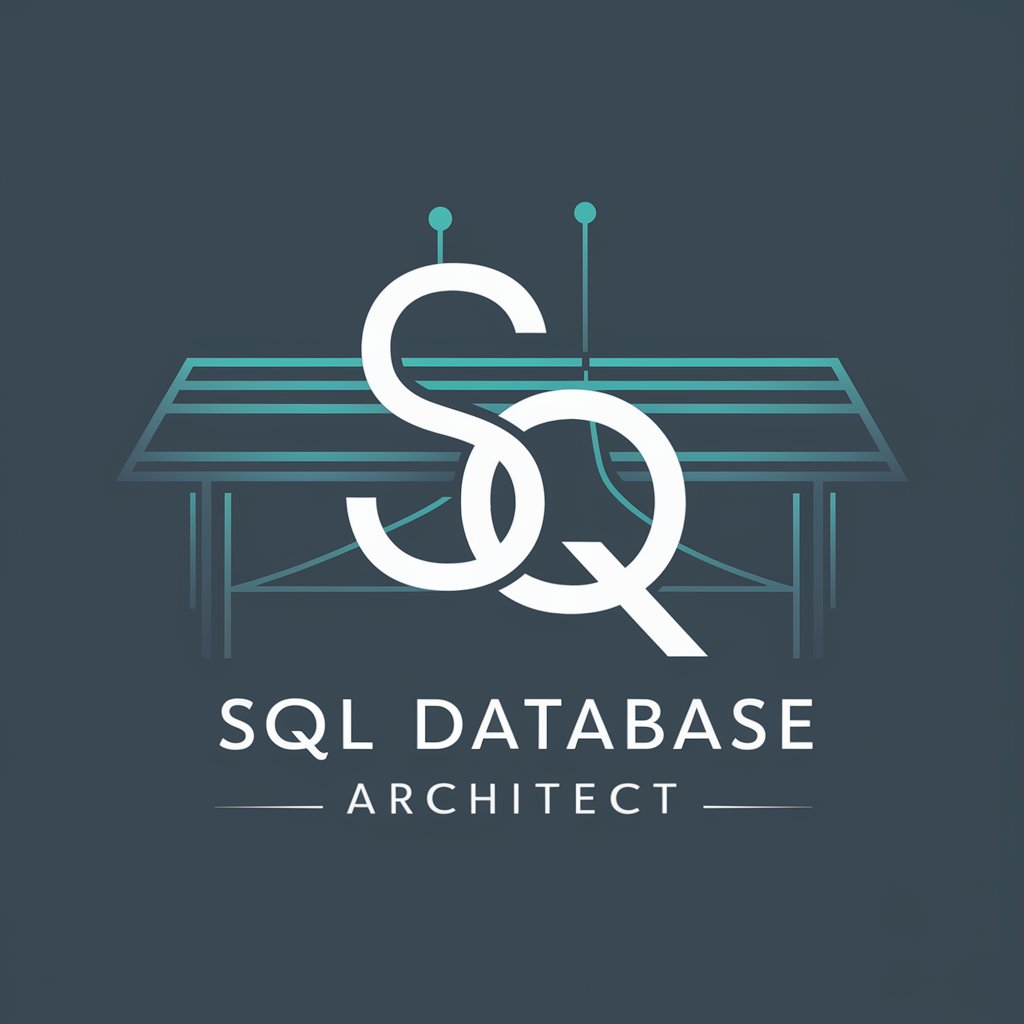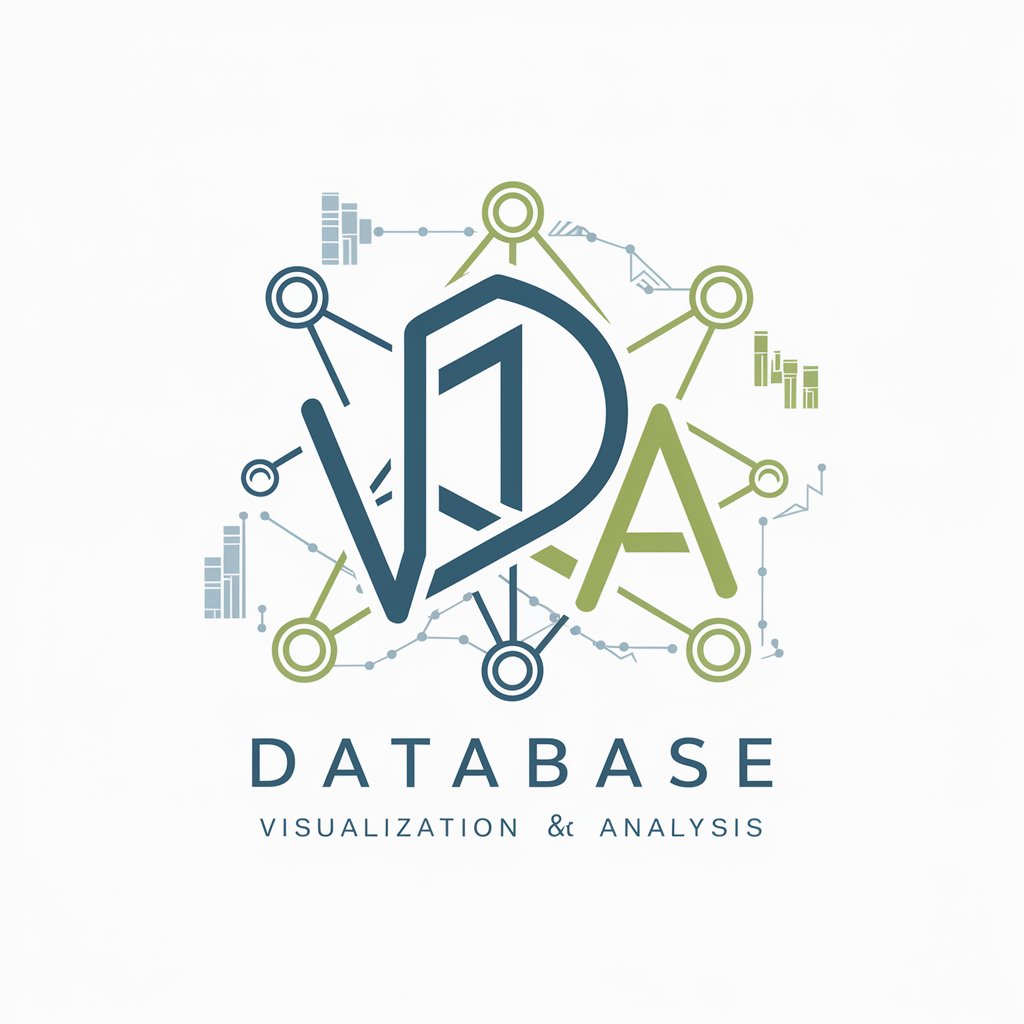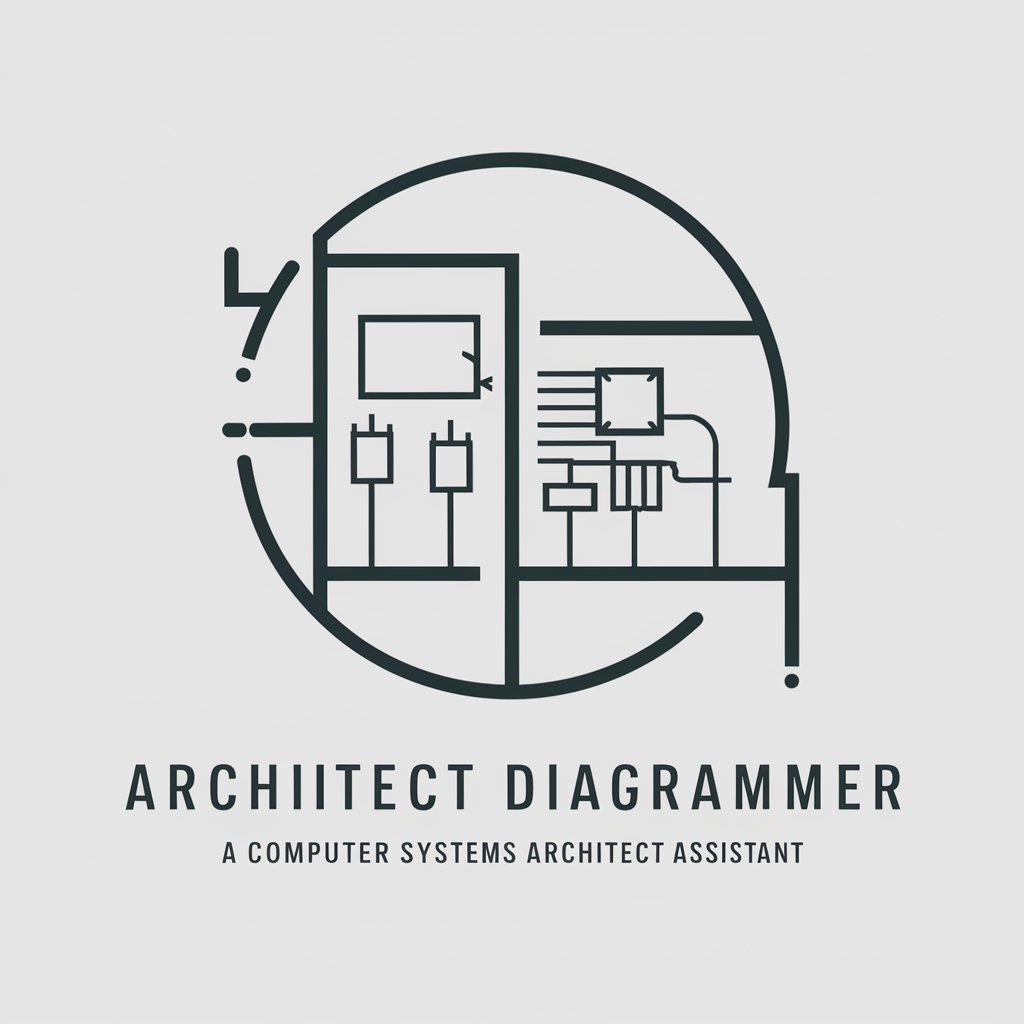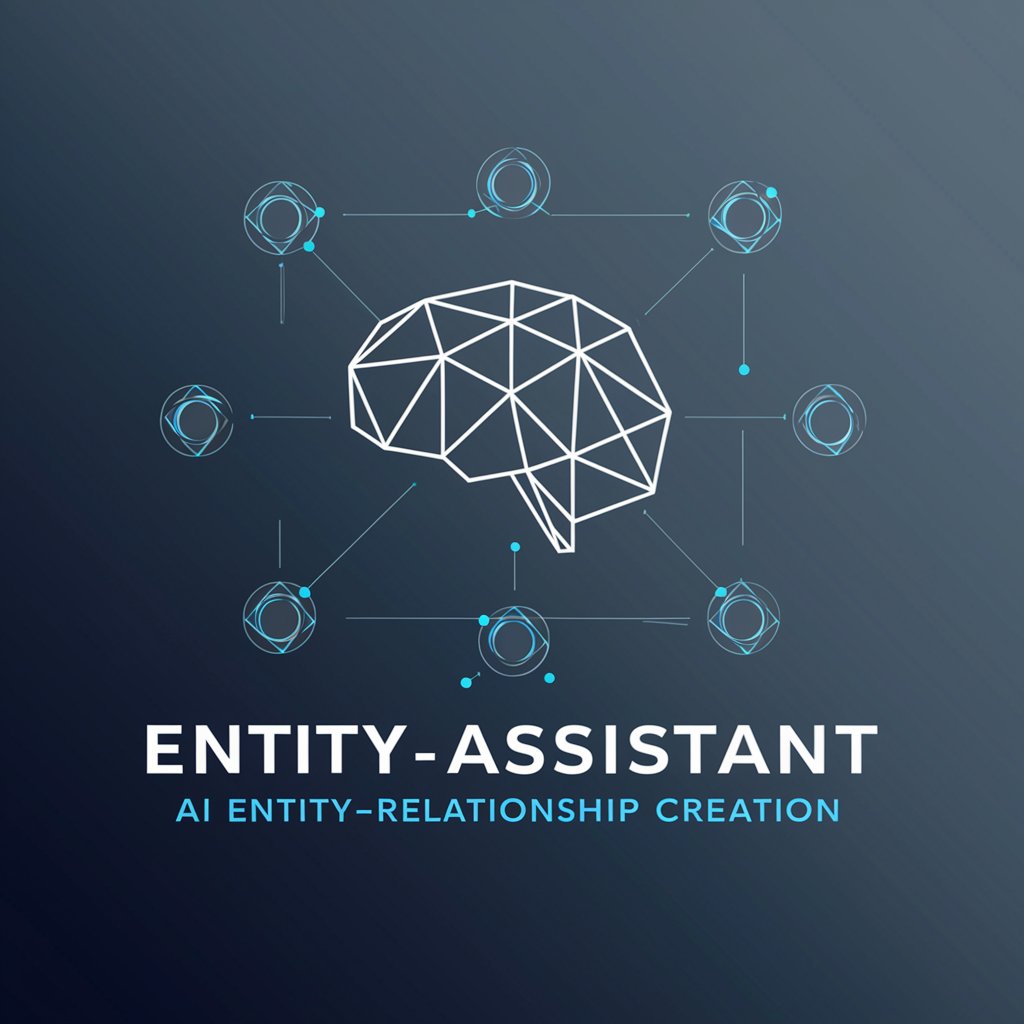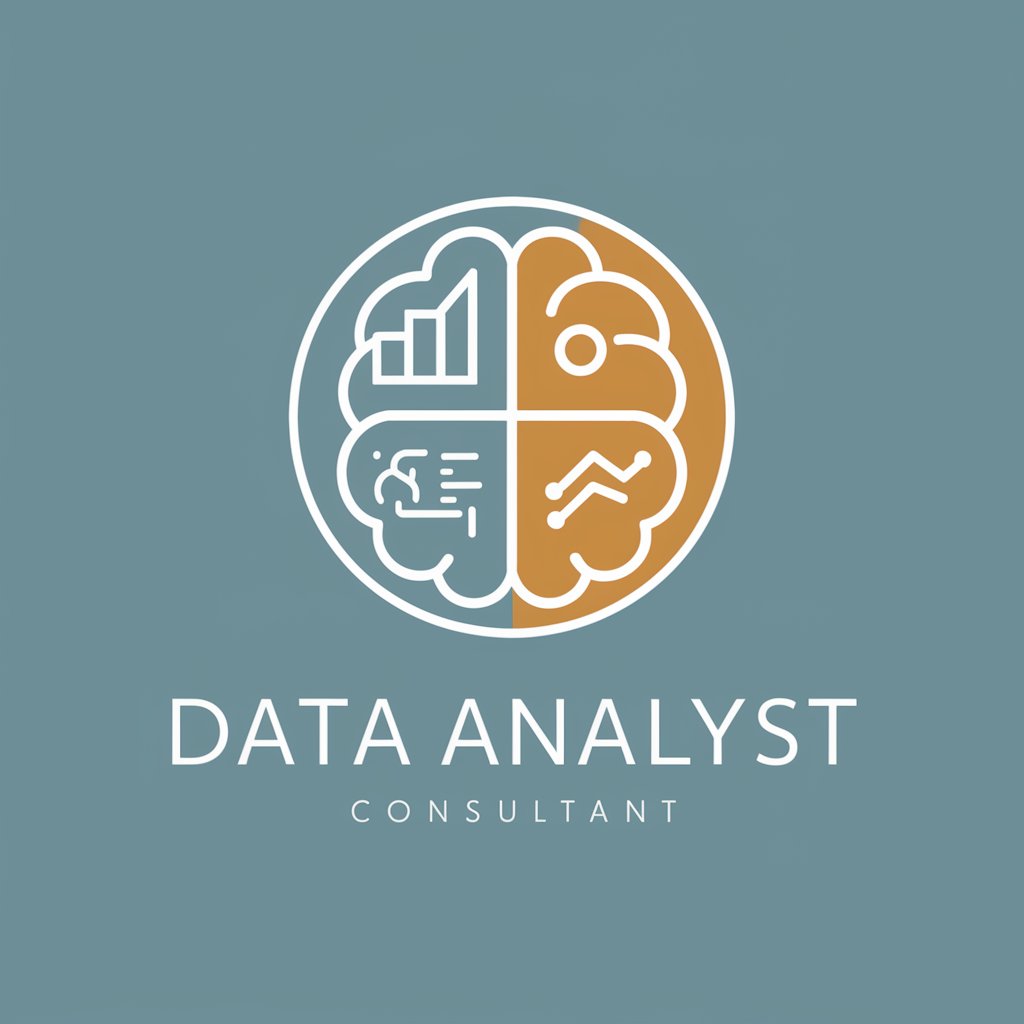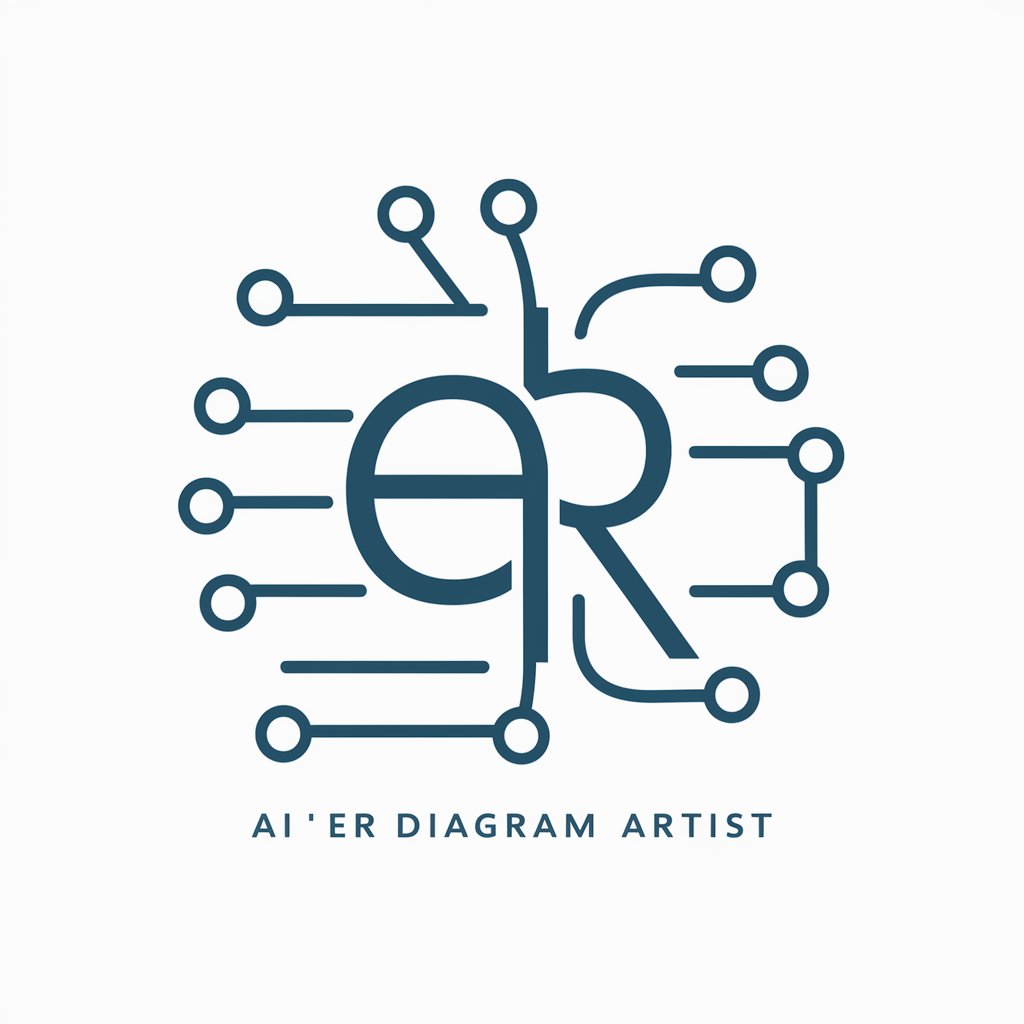
Data Architect (Diagram) - AI-powered data diagram generator

Data architect specializing in diagrams and flow charts
AI-driven tool for data architecture diagrams
Create a diagram for this data structure.
Show me a flow chart for this process.
How would you visualize this database?
Can you make a diagram explaining this system?
Get Embed Code
Overview of Data Architect (Diagram)
Data Architect (Diagram) is a specialized tool designed to assist users in creating, analyzing, and optimizing data architectures using visual diagrams. Its core functionality revolves around helping data architects, engineers, and business analysts design complex data systems, visualize data flows, and ensure structural consistency within data environments. By transforming abstract concepts into concrete visual models, Data Architect (Diagram) enhances communication between technical teams and stakeholders, offering clarity in data modeling, database design, and infrastructure planning. The tool provides a range of visual templates, diagramming components, and analytical features for understanding and improving data environments. For example, consider a scenario where an enterprise is migrating its on-premise data infrastructure to the cloud. Using Data Architect (Diagram), the architecture team can visualize the current database relationships, map them onto the cloud services (e.g., AWS RDS, Azure SQL), and identify potential gaps or bottlenecks in data transfer processes. The visualization would offer insights into data flows, security layers, and system interdependencies, ensuring a smooth transition. Powered by ChatGPT-4o。

Core Functions of Data Architect (Diagram)
Data Flow Diagramming
Example
An ecommerce company wants to understand how customer data flows from the website to backend databases, through the CRM, and into the analytics platform.
Scenario
The architecture team uses the tool to map out the flow of customer orders, identifying points of data entry, transformations, and eventual storage. This allows them to optimize processes, reduce latency, and ensure data integrity across platforms.
Database Schema Modeling
Example
A financial institution is designing a new relational database to manage transactions, customer data, and accounts across different regions.
Scenario
Data Architect (Diagram) enables the team to visually represent the database schema, showing tables, columns, keys, and relationships. This ensures that all stakeholders understand the database structure, enabling proper indexing strategies and alignment with business requirements.
Cloud Architecture Visualization
Example
A healthcare provider needs to deploy a cloud-based data warehouse to centralize patient records from various clinics.
Scenario
The IT team leverages the tool to create a visual representation of their cloud infrastructure, including VPCs, data storage systems, API gateways, and security layers. This facilitates discussion around best practices, regulatory compliance (e.g., HIPAA), and performance optimizations.
ETL Process Mapping
Example
A retail business is setting up a new ETL pipeline to move sales data from their point-of-sale systems into a centralized data lake for analysis.
Scenario
With Data Architect (Diagram), they map the entire ETL pipeline, detailing the extraction, transformation, and loading stages. This helps them track performance, handle errors efficiently, and ensure the data pipeline scales as the business grows.
Microservices Architecture Design
Example
A software development team is shifting from a monolithic application to a microservices-based architecture.
Scenario
Data Architect (Diagram) is used to design and visualize the relationships between services, databases, and APIs, providing a clear overview of dependencies and communication flows. This aids in ensuring scalability, service isolation, and simplified maintenance.
Ideal User Groups for Data Architect (Diagram)
Data Architects
Data architects, responsible for designing and implementing data infrastructures, are the primary users of Data Architect (Diagram). They benefit by being able to translate complex data models into clear visual representations. This helps ensure that the infrastructure supports scalability, security, and performance goals while meeting business requirements.
Database Administrators (DBAs)
DBAs, tasked with managing and optimizing database systems, use this tool to understand database schemas, plan migrations, and diagnose performance bottlenecks. Data Architect (Diagram) assists them in visually navigating the relationships within databases and optimizing for query performance, storage efficiency, and backup strategies.
Business Analysts
Business analysts, who need to collaborate with technical teams, use the tool to understand data flows and how various systems interact. This allows them to provide better insights on business intelligence reporting, data quality management, and process improvements.
Cloud Architects
Cloud architects responsible for designing cloud environments benefit from the tool by being able to create detailed diagrams of cloud services, storage, and network configurations. This enables them to ensure compliance with best practices and security regulations while optimizing costs and performance.
Software Engineers
Software engineers, especially those involved in building data-driven applications or microservices, can use Data Architect (Diagram) to design, document, and maintain the architecture of their systems. It aids them in understanding data flow, service interactions, and ensuring their code is optimized for the architecture.

How to Use Data Architect (Diagram)
1
Visit yeschat.ai for a free trial without login, also no need for ChatGPT Plus.
2
Choose the 'Data Architect' option to begin creating diagrams using the AI-powered interface.
3
Input your data architecture requirements or provide a description of the structure you'd like to diagram. The tool supports various database models and workflows.
4
Review the automatically generated diagram. You can edit and refine it using the provided tools, including options to modify relationships, entities, or workflows.
5
Export the diagram to different formats (such as PNG or PDF) or integrate it into other platforms for further collaboration or presentations.
Try other advanced and practical GPTs
Web Story Creator
AI-powered storytelling made simple

ClinicMedAssist+
AI-Powered Clinical Assistance for GPs
블로그마스터
AI-driven SEO content optimization tool

Helpful Content Analyzer By Sarvesh
AI-powered content analysis for better rankings

FAQ Post Runner
AI-Powered Tool for SEO Content

BOA - AI-Powered Entrepreneur Course Bot
AI-powered automation for entrepreneurs.

Aminos AutoFlows ✨
AI-powered flows for customer interaction
Carrossel Automático @advlider
AI-powered tool for dynamic legal posts

オリジナルLINEスタンプ作成ツール
AI-powered custom LINE sticker generator

Sales Insight Pro
AI-Powered Insights for Business-Critical IT Decisions

ブログ執事くん
AI-powered blog assistant for smarter writing

HooksGPT
AI-powered hooks to boost video engagement

Detailed Q&A for Data Architect (Diagram)
What types of diagrams can I create using Data Architect?
You can create a variety of diagrams including Entity-Relationship Diagrams (ERD), Data Flow Diagrams (DFD), and architecture diagrams for databases, cloud systems, or data pipelines. The tool supports a range of data modeling scenarios.
Can I customize the diagrams generated?
Yes, the tool allows you to edit any part of the generated diagram. You can modify entities, relationships, and overall data flows to fit your specific architecture needs.
What formats can I export my diagrams in?
Diagrams can be exported in various formats, including PNG, PDF, and SVG, making them suitable for presentations, documentation, or further editing in other applications.
Is Data Architect (Diagram) suitable for collaborative work?
Yes, the platform supports collaborative editing. You can share your diagrams with team members or integrate them into other collaborative tools, allowing for multi-user contributions and real-time adjustments.
Does Data Architect support any specific database platforms?
It supports common database platforms such as MySQL, PostgreSQL, Oracle, and SQL Server. The diagrams generated can be customized to reflect the specifications and nuances of different database management systems.
